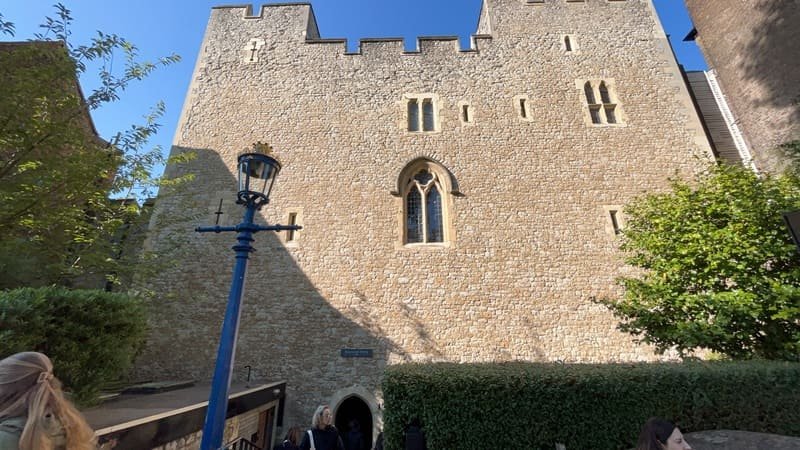
Audio Guide Script
The Beauchamp Tower, named after Thomas Beauchamp, Earl of Warwick, who was imprisoned here in 1397, served as a prison for high-ranking and important prisoners during the Tudor period. Its walls are adorned with intricate carvings and graffiti left by those who were held captive here, providing a poignant glimpse into their thoughts and experiences.
As you explore the tower, take note of the elaborate inscriptions on the walls. These carvings, some dating back to the 16th century, were created by prisoners using whatever tools they could find. Many of these inscriptions are remarkably well-preserved, offering a tangible connection to the past.
One of the most famous inscriptions you’ll encounter is that of John Dudley, Earl of Warwick. His carving, which includes an intricate family crest, serves as a testament to the artistic skill and patience of those confined within these walls.
The tower also housed several notable prisoners connected to the Tudor dynasty. Among them was Lady Jane Grey, the “Nine Days Queen,” who was held here before her execution in 1554. Her husband, Lord Guildford Dudley, was also imprisoned in this tower.
As you climb the spiral staircase, imagine the countless footsteps that have traversed these same steps over the centuries. Each floor offers a different perspective on the tower’s history and the lives of those who were held here.
The Beauchamp Tower stands as a silent witness to some of the most turbulent periods in English history. Its walls have absorbed the whispers, fears, and hopes of those who found themselves on the wrong side of power. As you conclude your visit, take a moment to reflect on the human stories that unfolded within these stone walls, forever etched into the fabric of this historic structure.
Now let’s head outside and walk around the wide lawn on the right. Across the lawn, you’ll see old timber buildings from the 16th century. That’s our next tour stop, the Queen’s House.
Next: Queen’s house
